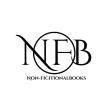Best Nonfiction Classics
7 Non-Fiction Classic Books

The most crucial genre in nonfiction is classic, which helps you discover yourself, makes you think about philosophies, and enables you to explore different perspectives. These nonfiction classics capture real-life incidents and a person’s narrative about them. Nonfiction is the literature that provides fact-based perspectives and information concerning different ideologies. These writings tell about historical events, sometimes the narrator’s personal life, sufferings, or social issues that need to be highlighted.
So get ready to learn about some of the Best Nonfiction Classics with some of these great writers’ more dramatic techniques. Here is a list of a few of the most exciting nonfiction classics. Go through this overview, choose what to read, and contrast your ideas with those of the writer.
Meditations by Marcus Aurelius

At its core, “Meditations” encapsulates the distilled thoughts of Marcus Aurelius, a Roman head and indifferent rationalist whose reflections have risen above the limits of time. The philosophical wealth of this work welcomes readers into an excursion of self-disclosure and introspection, offering an embroidery of experiences that are as significant today as they were in old times.
Resilience—the art of perseverance and composure in the face of hardship—is one of the book’s central themes. Drawing from his leadership experiences, Marcus Aurelius provides important examples of confronting difficulty with a consistent psyche and a courageous soul. His appearance on flexibility reverberates as a directing light for those looking for strength in the face of life’s inevitable trials.
The concept of self-discipline is woven intricately throughout the pages of “Meditations.” Marcus Aurelius explores the dominance of one’s viewpoints, activities, and feelings, stressing the groundbreaking force of trained reflection. The philosophical standards explained in the book act as a pragmatic aid for people trying to develop self-control and harness their inner strength.
Central to the timeless appeal of “Meditations” is its exploration of inner peace. Marcus Aurelius offers profound insights on finding tranquility amidst life’s tumultuous currents. His reflections encourage readers to seek a serene center within themselves, providing a compass for navigating the complexities of existence with equanimity.
In Cold Blood by Truman Capote
Truman Capote’s “In Cold Blood” goes beyond true crime, treasuring it as a writer’s catnip. A 1966 book, which perfectly reenacts the Clutter family murders in Kansas during the year 1959, it doesn’t make much of a difference between fact and fiction. The brilliance with which Capote, via his narrative, probes the inner secret of both the victims and their tormentors is simply spellbinding, producing a grim yet intricate picture of human nature.
By bringing life to the words and discovering details through hard work, the writer is helping to create a story that shows the foundation of evil and the instability of innocence. “In Cold Blood” causes the readers to make tough choices about the evils of society, morality, and violence, thus leading them to the development of a new genre of literature in true crime stories.
The warmth of other suns by Isabel Wilkerson

The famous “The Warmth of Other Suns” by Isabel Wilkerson is a collection of remarkable stories about the Great Migration, one of the most significant events in the history of the United States. Which was initially published in the year 2010; she told the sad stories of three people representing the millions of African Americans who decided to get away from the racist humiliations and conditions of Southern Jim Crow into the western or northern states to secure better lives. On the pages of Wilkerson’s book, historic migrations inspire her to document not only the effects on the politics, culture, and society of the United States but also on the nation itself.
A room of one's own by Virginia Woolf

Ever since its publication in 1929, Virginia Woolf’s feminist masterpiece “A Room of One’s Own” holds a cherished place among admirers of the movement. In Woolf’s famous essay, she argues that women must have both their finances and a place to create things to become self-sufficient. Toward that end, she shows her superiority by using very high prose and frank statements, weaving her keen observations, which have demonstrated that the patriarchal system that has always oppressed women in the field of literature in the past will never again exist. “A Room of One’s Own” is a poignant reminder of the continuing struggle for equality and artistic identity and a piece that has an enduring influence throughout history and culture.
A double helix by James D. Watson

James D. Watson’s “The Double Helix ” is the most enchanting memoir in which Watson tells about the unique and controversial race for discovering how DNA is constructed. Written in 1968 and to date primarily considered as the critical, creative offering of this work, Watson introduces the reader to the exciting and accurate tale of a scientific pursuit which, given the result obtained, should rightfully be considered one of the outstanding breakthroughs in biology. Despite this reservation about the representation of Franklin, the book is still a landmark, expounding to us scientific processes, not to mention the human dynamics behind the world-famous discoveries.
Hiroshima by John Hersey

John Hersey’s article “Hiroshima” is an emotionally charged and horrifying truth of the atomic bombing of Hiroshima that resulted on August 6, 1945. Published in 1946, Hersey’s masterpiece is a case of journalism skill because the work is about six survivors’ lives and what they went through after the catastrophe. The writer’s characters’ main feature is that we can feel the atomic bomb horror caused by the nuclear bomb through means of their difficult life.
He goes beyond strict politics, concentrating on the narrative of private individuals who simultaneously find themselves involved in the most complicated circumstances. Hiroshima is an enduring token of the consequences of war and a transformative process – leading people to omit the realities of the factor of nuclear bomb weapons from the peace agenda.
You may read more Non-Fiction Classics
About the Creator
Non-Fictional Books
We at Non-Fictional Books try to reach the world by writing blogs so that everyone can experience the joy of getting in the world of Non-Fiction books.






Comments
There are no comments for this story
Be the first to respond and start the conversation.